- Home
- D. W. Patterson
To the Stars V-1
To the Stars V-1 Read online
TO
THE
STARS
V-1
D.W. PATTERSON
Copyright © 2020 D.W. Patterson
All rights reserved.
1st Edition
First Printing - October, 2020
Cover – Copyright © 2020 Future Chron Publishing
Cover Image – Photo 62555149 © Vivilweb
No part of this book may be reproduced in any manner whatsoever without permission, except in the case of brief quotations for the purpose of review. For information please contact – futurechronpub on gmail
This is a work of fiction. Names, characters, places and events are products of the author's imagination and should not be construed as real. Any resemblance to actual events and people, living or dead, is entirely coincidental.
DEDICATION
To Sarah
CONTENTS
First One Hundred
First Dark Ages
Second One Hundred
Second Dark Ages
The Path Of The Long March
Afterword
About The Author
ACKNOWLEDGMENTS
Arthur D., Raymond J., Richard L., Kilgore T.
FIRST ONE HUNDRED
Image - © Bruce Rolff
1
It was a historic undertaking. A mission to establish the first human colony on an exoplanet, a planet outside the Solar System, and Jerome was worried. He was about to undergo a test that would determine his suitability for the mission.
He would soon suit up for an extravehicular activity (EVA), a spacewalk. But what a spacewalk. Because the crew wheel of the spaceship was located two-thirds of the way along the ship's spine from the fusion engines the “walk” to the engines would be about two thousand feet.
That's over four thousand feet, thought Jerome, there and back.
He wasn't actually a member of the ship's permanent crew but a mission specialist enlisted by the ship operator just for this mission so he didn't have a lot of EVA experience. Jerome shook his head and suited up.
The ship was the largest ever outfitted with the wormhole generator. The generator was a device that could open the near mouth of a wormhole while also “casting” or creating the far or destination mouth of the wormhole. At the same time, the exotic mass also created by the generator would keep the wormhole stable while a ship passed through. One could think of the generator as a way to reach into the sub-microscopic quantum topology of the universe and enlarge an existing but short-lived wormhole mouth to a useful size and duration. The generator would then cast the other mouth of the wormhole through sub-microscopic spacetime to the desired far location and enlarge it. The exotic energy-mass then lined the wormhole like the scaffolding of a bridge. Once the wormhole was established a ship, entering the near-side mouth, traveled through the wormhole dimension and out the other mouth several light-years away at a speed less than the speed of light, at least in the wormhole frame of reference. None of the known laws of physics were violated by the generator, but as yet all the physics of wormholes hadn't been discovered. As with many technologies so often it happens that humans learn to use a technology without fully understanding it.
Anyway, Jerome was a fully qualified fusion engineer and it was his job to take care of the fusion engines needed to fly the ship through normal space and that job included EVAs past the storage areas and to the distant fusion engines all the way at the back of the ship.
Okay, here goes, thought Jerome as he and Winslow accessed the airlock. Winslow, whom Jerome usually called Homer, was another rookie fusion engineer on his first interstellar mission. Though they had both served on fusion freighters in the Centauri System, neither had flown interstellar.
“You read me Homer,” asked Jerome over the comm-link.
“Roger,” replied Winslow, “let's get this done.”
The spine of the ship was made of interlinked girders of a carbon composite that was strong but flexible. The composite was wrapped in a particle shield, inside of which was an x-ray shield. This design prevented most fast-moving interstellar particles from impacting the frame and weakening it over time. Closer to the fusion engines it also prevented any radiation damage. But as Jerome and Winslow began their walk down the access bridge they knew they hadn't such good protection.
Even though the fusion engines were aneutronic they still could give off some radiation, mostly in the form of various fast-moving particles or gamma rays. These collided with the reactor shielding leaving only soft x-rays. But even with this lesser radiation, a crew member would not want to remain in the vicinity too long.
Jerome hoped that they would only be there momentarily as they logged the levels of the fusion fuel supply tanks. The walk was going smoothly. Jerome was calming down and thinking to himself how easy it all was.
As they approached the storage tanks Winslow asked, “Jerome you want to take the ones on the right and I'll do the left?”
“Roger that Homer.”
The Daedalus Unbound was a fourth-plus generation fusion ship. Its engines worked on the deuterium-helium 3 fusion reaction. The advantage of this reaction was a large amount of energy with almost an absence of neutrons. The lack of neutrons allowed a much longer engine life due to the reduction of materials damage and activation levels (radioactivity) when compared to other fusion reactions. In the fourth generation-plus engine the loss of efficiency to neutron and x-ray emissions was almost nil.
The tanks containing the deuterium oxide pellets were on the left, the tanks containing helium 3 on the right. It wasn't long until Jerome and Winslow had recorded the values from each of the tanks.
They met back at the walkway and started their return trip. Everything was going fine until Jerome looked up from the walkway to the rotating crew wheel. That's when he started getting anxious. The view was dominated by the spinning crew wheel and just beyond the even more magnificent but frightening spinning end cap of the huge, eight-miles in diameter Logan space habitat. The habitat dominated the horizon, and the horizon was rotating!
Jerome felt a deepening sense of vertigo. He froze in his tracks and dropped to his knees as he had been trained. He activated the comm-link and called Winslow's name. Winslow had turned and was almost back to him when the fuel loading crane started to pivot silently, slow at first but gaining speed towards the two men.
Winslow keyed his mic, “Control we have a prob ...”
Those were his last words as the arm caught him and swept him from the walkway. Jerome took a glancing blow and was knocked on his back. He called after Homer and tried to rise before blacking out.
“I don't understand it,” said Captain Young. “We have enough security cameras on this ship to surveil a small city and you are telling me Lieutenant that we have no vid of this incidence?”
“Unfortunately that's true ma'am,” said Lt. Aaron. “Those cameras were down at the time.”
“So we know nothing about what happened to engineer Winslow?”
“I'm afraid not Captain. Not until engineer Jackson wakes up and tells us what he knows.”
“Very well Lieutenant, thank you for the briefing,” said the Captain somewhat sarcastically.
A day later Jerome woke up.
“How's Homer?” he asked the nurse.
“Mr. Winslow's body has been recovered,” she said quietly.
“Oh,” said Jerome and closed his eyes again.
It was a week before Jerome felt strong enough to go before the inquiry board.
The Captain was the first to question him.
“Thank you engineer for agreeing to testify. And let me say for all here that we are sorry for the loss of your friend engineer Winslow.”
“Thank you ma'am.”
“Tell us engineer what you remember about the incident.”
“I remember Homer, that's what I called engineer Winslow. Homer and me had turned to walk back to the airlock. Everything was going well until I looked up and saw the spinning crew wheel and farther on the spinning habitat. Then I felt dizzy and dropped to my knees. Next thing I know I'm knocked on my back and blackout.”
“So you don't remember engineer Winslow returning to your aid?”
“No ma'am I never saw him.”
“And you don't remember seeing what hit you?”
“No ma'am, it happened so fast that I was still looking down at the walkway trying to recover my balance.”
“Any other questions?” asked the Captain looking around the table.
Seeing that there were no more questions she thanked Jerome and dismissed him.
“Well he didn't tell us anything new,” said Lieutenant Commander Rollins.
“I think he told us all he knew though,” said Chief Carlos.
“I believe so too,” said the Lt. Commander. “But what I don't understand is how little we know. It seems to me that all the information we should have was suppressed by someone.”
“Or something,” said the Captain.
The Chief and Lt. Commander stared at Captain Young.
“Anyway,” said Captain Young. “What do we do with engineer Jackson?”
“I don't think he should be allowed to continue,” said the Chief.
“I disagree,” said Lt. Commander Rollins. “A momentary dizziness which was induced by the environment and not an inherent physical problem is no reason to deny him this mission. He did what he was supposed to do. He dropped to his knees to wait for the dizziness to pass.”
“Engineer Jackson is extremely well qualified to go on this mission,” said the Captain. “I think it would be a great loss, so I agree with the Lt. Commander, sorry Chief.”
The Chief shrugged and said, “As long as we restrict his EVA opportunities.”
The other two nodded in agreement.
The Daedalus Unbound was held up for two weeks while the United Space Services Organization (USSO), which was a conglomeration of private companies and public offices, worked with law enforcement from the habitat to determine what had happened.
Eventually, there wasn't enough evidence to rule other than accidental death and the case was closed.
2
Besides the spaceship crew whose main job was to get the Daedalus to its destination, there was also the one-hundred colonists to be accommodated. The colonists that would go were being chosen by the Social Science Division of the USSO.
From a psychological standpoint choosing the first one hundred, the first humans ever to try to colonize an exoplanet, was difficult because the mission had two conflicting goals; getting there and surviving there.
Getting there could be compared to the early treks across the frozen polar regions back on Earth where individuals were faced with a situation that precluded group activity except maybe coordination over rough terrain. Highly autonomous individuals were happy crossing the polar regions and were also happy to be alone, uninterested in accommodating others in a group.
But a group was all-important once the colony building commenced. In group dynamics, extraversion, agreeableness, and conscientiousness became highly prized attributes. All these attributes contributed to constructive communication and cooperation which task-oriented individuals lacked.
So if the psychologists chose only one type of individual then that part of the mission would have a greater chance of success but the other part would have a greater chance of failure. Maybe a half-half choice would be best? But then there was the possibility of developing distinct subcultures that could drift apart because of different goals and values. The specter of serious conflict between the two groups became a very real concern since tensions between such groups had been noted since the dawn of space travel.
Dr. Leonard Maslen, head of the psychology department, was discussing the psychological factors that would affect the flight with his colleague Dr. Christina Maccoby who would accompany the mission. They had agreed to call the two groups trekkers and stayers.
“I agree Christina, there is definitely a spectrum of types sometimes. And it is hard to decide exactly which bin to place a colonist in.”
“I've been thinking Leonard that maybe that is not so bad. What do you think of a thirty-forty-thirty mix? Thirty percent trekkers, thirty percent of stayers, and forty percent individuals with a mixed profile?”
“Sounds interesting and it might work. I'll run it through my model. I think it may be a good solution to a difficult sorting problem. That way we can always have approximately seventy percent well or somewhat well prepared for the segment of the mission that they are currently undertaking.”
“I agree Leonard,” said Dr. Maccoby smiling.
“Good, then I think we've found a solution. If it holds up in simulation I'll tell corporate,” said Dr. Maslen.
Later that week Glynn Kranz, Mission Director, was on his weekly walk-about visiting the different departments. He was currently visiting Dr. Maslen.
“Training,” said Kranz.
“Of course, we have that already in our recommendations,” said Dr. Maslen.
“Not enough,” said Kranz. “You need to keep these people busy in some training scenario from the time they come on board until launch and even after.”
“But Glynn spaceship design has advanced a great deal as we've taken into account attribution error. We now design for the right 'type' of social and environmental factors and not the right 'type' of person.”
“That's as may be Doctor but it doesn't hurt to reinforce their character as well.”
“That's the old 'right stuff' argument Glynn. That went out with chemical rockets. There have been many fundamental studies showing that 'good' people can be manipulated into doing 'bad' things under the right situational circumstances.”
“Well, that 'old right stuff' as you call it got us into space, to the moon, and Mars. So I wouldn't dismiss it offhand.”
Kranz had been handling space missions all his life, even before he graduated from school. Now with the USSO Kranz had overall responsibility for the colonization mission to the Trilos System.
USSO was based out of the Logan Colony orbiting Alpha Centauri B. This mission would be the first to establish a colony on a solid body. Until now all extra-solar colonization had been in the Centauri System and in cylinder-shaped space habitats.
But what habitats! Logan itself was a dual cylinder habitat. Each cylinder was 8 miles in diameter and some 40 miles in length. One cylinder was residential and commercial with almost 5 million people and the other was light industrial and agricultural. Each cylinder rotated to provide eight-tenths of Earth gravity. Rigidly attached at their end-caps the oppositely rotating cylinders canceled the angular moment of the entire structure making it easier to keep it aligned with Alpha Centauri B. A fixed alignment also assisted in keeping the light reflecting mirrors illuminating the interior properly.
Other habitats also orbited Centauri B and Centauri A. Enough habitats of all sizes so that nearly three hundred million people now populated the system.
Kranz left the social sciences and was on his way to the engineering building to meet with the Head of Spacecraft Engineering.
“Hey Glynn, how are you?”
“Fine Sergei, how about you?”
“Same Glynn.”
“Sergei I came to discuss the Daedalus. Can you give me an update?”
“Well at this time the spacecraft is set to undergo its first test flight next month. The wheel section is already rotating.”
“I know, at a thousand feet in diameter it's quite a sight to see,” said Kranz. “And you integrated the layers of the wormhole generator well.”
“Yeah, the inner layer where the large mass is exposed when the outer layer creates the Mach effect was the key. Once we had it attached securely it w
as easy to add the other two layers. Still, the next layer, the actuator layer, the layer that drives the outer layer and the Mach effect, that was a bit tricky at this scale. It's still a piezoelectric but we had to figure out how to stiffen it without compromising its performance.”
“I've always been surprised at how relatively simple is the structure of the generator,” said Kranz. “I mean the material science and the power engineering are impressive but three layers of material slowly spinning,” he shook his head. “I would never have expected such an arrangement would make a wormhole.”
“Elias Mach was a pretty smart kid when he developed the generator. Who would have thought that you could shield a local mass from the universal mass and thereby unlock the intrinsic mass of the electron? And that the intrinsic electron mass would be huge and negative which is exactly what is needed to create and maintain a wormhole. I mean the theories were there but it was genius to pull them all together and build something practical.”
“Still it has to be spinning to work. And that's a big wheel to spin,” said Kranz.
“Yeah, we've never spun anything that big at one point-seven revolutions a minute to get the four-tenths gravity we want. The outer surface of that big wheel will be moving at almost one-hundred kilometers per hour.”
“You think it will hold together?”
“It should, it's designed to spin as fast as two and a half revolutions per minute. So I don't expect any structural problems. We'll be looking at the bearing load though, where it attaches to the fuselage of the ship.”
“It's magnificent Sergei.”
Kranz paused a moment. “I suppose you've been in contact with the psychologists?”
“Yes I have,” said Sergei Prokiev.
“They've presented you with the environmental requirements?”
“Yes we will accommodate them.”
“How about project delays as a result?”
“They shouldn't be severe. We will simply move some walls around so that every one of the crewmen will have a windowed view in their quarters.”

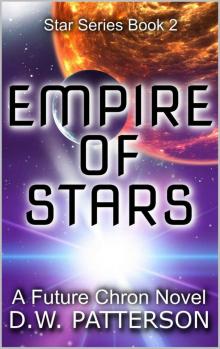 Empire of Stars
Empire of Stars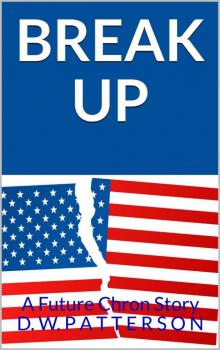 Breakup
Breakup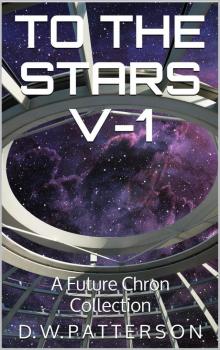 To the Stars V-1
To the Stars V-1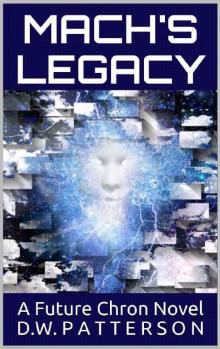 Mach's Legacy
Mach's Legacy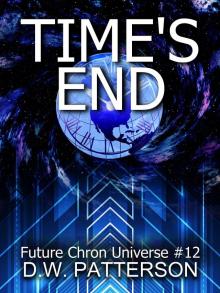 Time's End: A Future Chron Novel (Future Chron Universe Book 34)
Time's End: A Future Chron Novel (Future Chron Universe Book 34)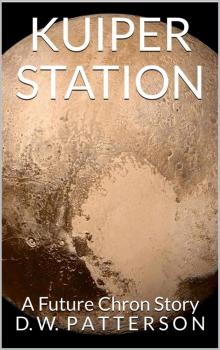 Kuiper Station
Kuiper Station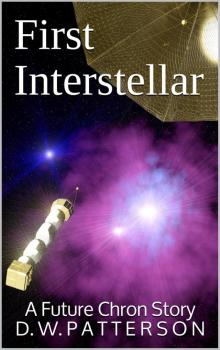 First Interstellar
First Interstellar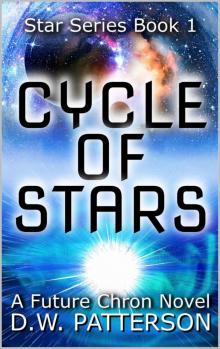 Cycle of Stars
Cycle of Stars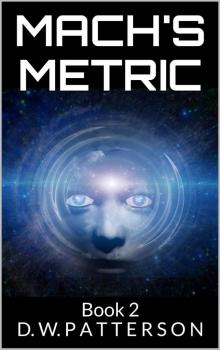 Mach's Metric
Mach's Metric Freedom From Want: A Future Chronology Short Story (Future Chronology Series Book 7)
Freedom From Want: A Future Chronology Short Story (Future Chronology Series Book 7) From the Earth: A Future Chronology Anthology
From the Earth: A Future Chronology Anthology Circle of Retribution: A Future Chronology Short Story (Future Chronology Series Book 6)
Circle of Retribution: A Future Chronology Short Story (Future Chronology Series Book 6)